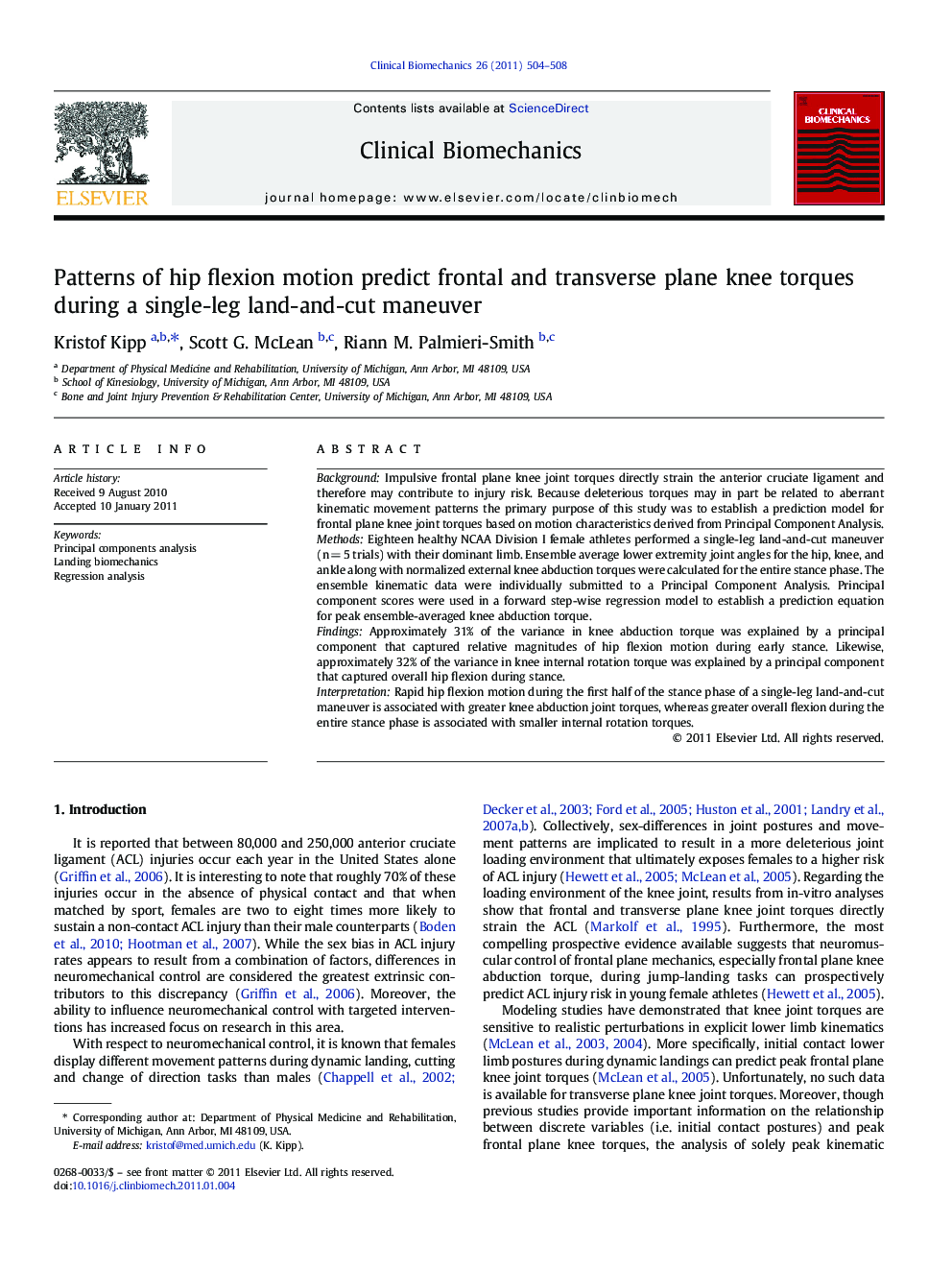| Article ID | Journal | Published Year | Pages | File Type |
|---|---|---|---|---|
| 6205092 | Clinical Biomechanics | 2011 | 5 Pages |
BackgroundImpulsive frontal plane knee joint torques directly strain the anterior cruciate ligament and therefore may contribute to injury risk. Because deleterious torques may in part be related to aberrant kinematic movement patterns the primary purpose of this study was to establish a prediction model for frontal plane knee joint torques based on motion characteristics derived from Principal Component Analysis.MethodsEighteen healthy NCAA Division I female athletes performed a single-leg land-and-cut maneuver (n = 5 trials) with their dominant limb. Ensemble average lower extremity joint angles for the hip, knee, and ankle along with normalized external knee abduction torques were calculated for the entire stance phase. The ensemble kinematic data were individually submitted to a Principal Component Analysis. Principal component scores were used in a forward step-wise regression model to establish a prediction equation for peak ensemble-averaged knee abduction torque.FindingsApproximately 31% of the variance in knee abduction torque was explained by a principal component that captured relative magnitudes of hip flexion motion during early stance. Likewise, approximately 32% of the variance in knee internal rotation torque was explained by a principal component that captured overall hip flexion during stance.InterpretationRapid hip flexion motion during the first half of the stance phase of a single-leg land-and-cut maneuver is associated with greater knee abduction joint torques, whereas greater overall flexion during the entire stance phase is associated with smaller internal rotation torques.
